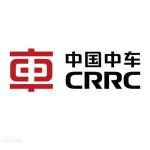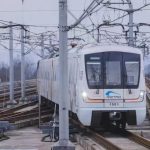Recently, the scientific research project of the 100km/h Type A subway vehicle with dual-flow system of CRRC Puzhen Company won the first prize of the 2021 CRRC Technology Award.
Project Description
This project adopts an all-welded A-type aluminum alloy body, the design speed of the train is 110km/h, the operating speed is 100km/h, and the bogie system adopts the PW120 platform. For the first time, two current receiving devices, current collector and pantograph, are used. The main line is the current receiving shoe/contact rail, and the depot is the pantograph/catenary current receiving. The current is controlled and switched in a specific transition area. It can be completed in-house, and the current receiving conversion scheme is automatic control. Through the integrated TCMS and LCU system, the collection and diagnosis of the various states of the vehicle (traction system, pantograph, current collector and position information) are automatically controlled to reduce human operations as much as possible. , reduce the errors caused by the driver’s judgment and complex operating procedures, and improve the efficiency of vehicles entering and leaving the warehouse. At the same time, the automatic control scheme of flow conversion is adopted, and the vehicle has systems such as intelligent operation and maintenance, big data analysis, active obstacle detection and auxiliary collision avoidance.


What is dual-flow rail transit?
At present, there are two main ways of receiving current for vehicles in urban rail systems around the world: the third rail receiving current and the catenary current receiving method. Corresponding to these two power supply modes, the current receiving modes of the vehicle are mainly collector shoe type and pantograph type. The dual-flow system rail transit is a rail transit system that combines these two flow-receiving systems.

Advantages of dual-mode streaming
■ 1. The current collector shoe is adopted in the operation of the train, and the cross-sectional limit of the train is much smaller than that of the rail train that adopts the pantograph to receive current, which greatly reduces the amount of excavation in the tunnel section of the operating line, and the construction cost is low. The construction period is shorter.
■ 2. The train is more beautiful when operating in the elevated section, avoiding the problems of erecting and maintaining the catenary in the elevated section.
■ 3. The vehicle depot and the entry and exit sections adopt the pantograph method, and the catenary for supporting power supply is a high-altitude hanging object, which does not affect the maintenance work on the ground, and is safer and more convenient for daily operations.



